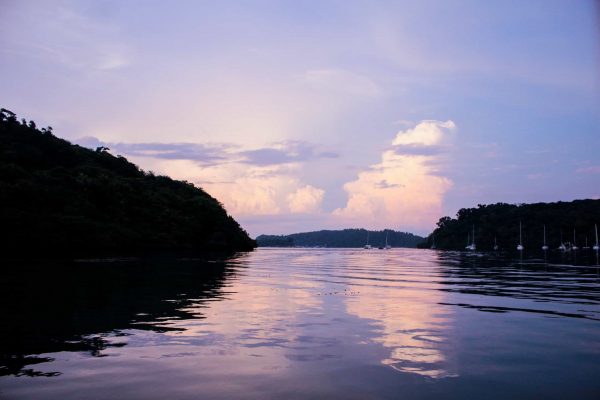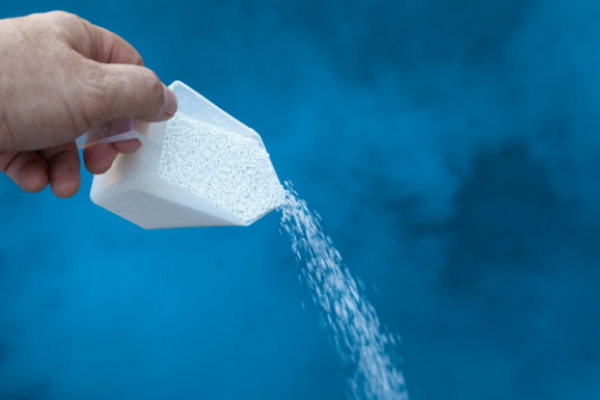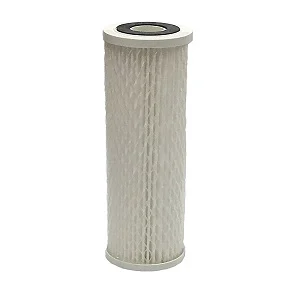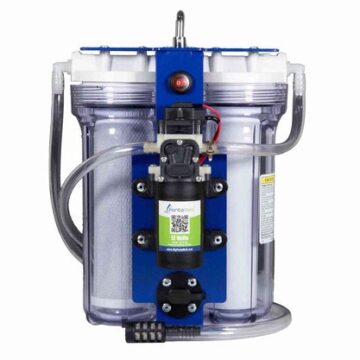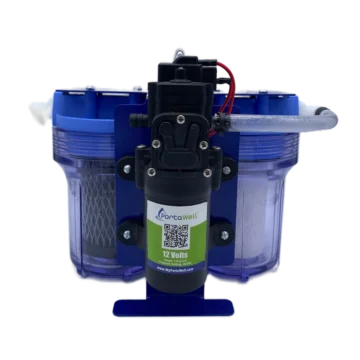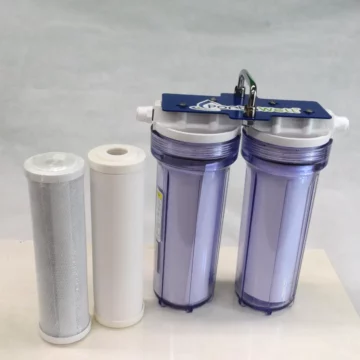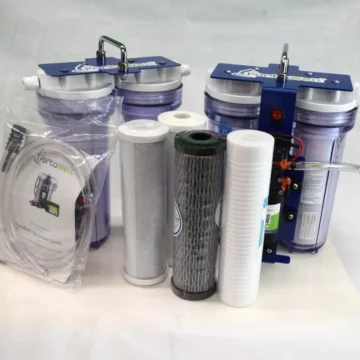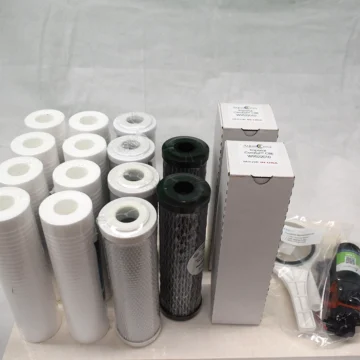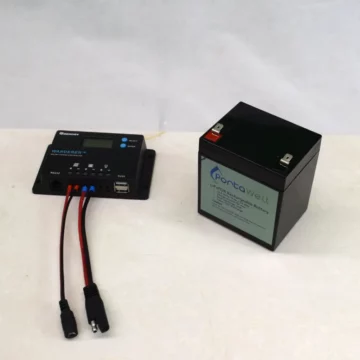Emergency Water Treatment Tutorial (Part 1) – Particulate
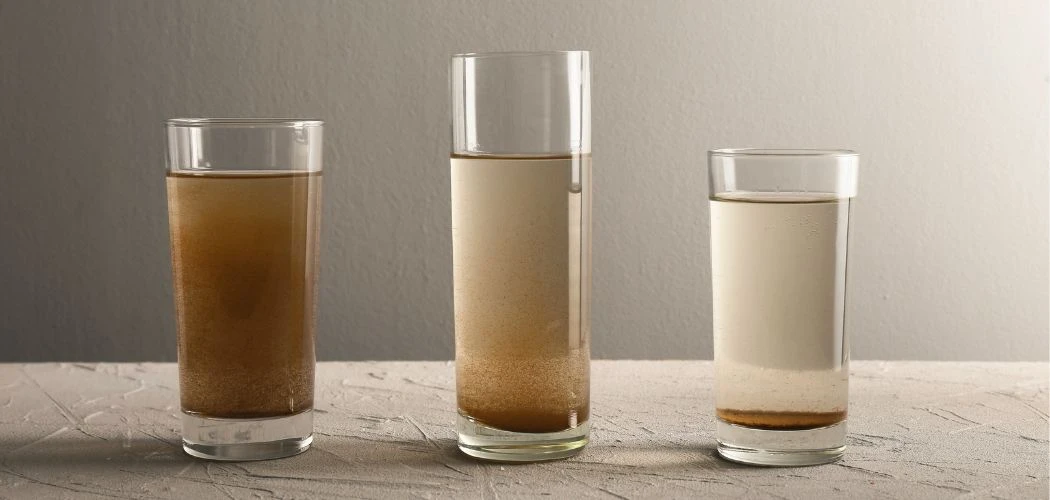
There are various contaminant types that can make surface water unsafe to drink and learning how best to reduce/remove these contaminants is critical to emergency water treatment.
These contaminants can generally be classified as particulate, biologic and chemical substances.
In this part of this water treatment tutorial we will focus on particulate.
Particulate
Particulate contaminants in water can be divided into two types characterized by passing the water through a fine filter (1.5 microns). The particles that are large enough to be held back by the filter are called total suspended solids (TSS), while the particles that pass through the filter are called total dissolved solids (TDS).
Total Suspended Solids (TSS)
Suspended particulates that make the water cloudy include sediments such as silts and clay, and fine inorganic or organic matter such as algae. The technical term for this cloudiness is called “turbidity”. Water turbidity is measured by determining the clarity or transparency of a water column.
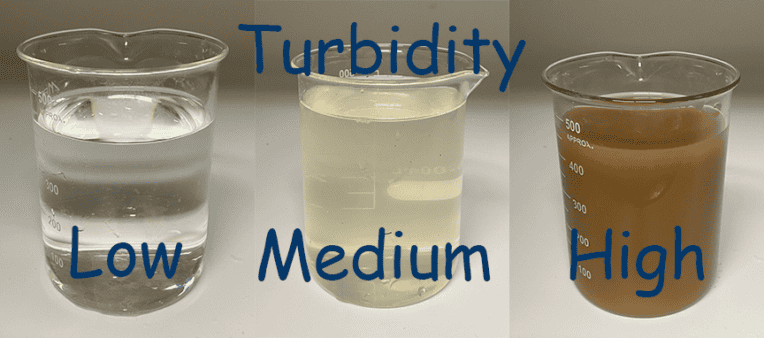 One simple instrument to measure turbidity is clear cylinder (usually 1 meter tall and 2 inches in diameter) that has a target design on the bottom. The cylinder is filled with water and slowly released from the bottom until the target becomes visible when looking down from the top of the tube. The tube has a side scale with Nephelometric Turbidity (NTU) unit’s markings on the side (0 to 60 NTU scale). Water suitable for drinking should read close to 0, meaning the target is visible through a full-length column of water.
One simple instrument to measure turbidity is clear cylinder (usually 1 meter tall and 2 inches in diameter) that has a target design on the bottom. The cylinder is filled with water and slowly released from the bottom until the target becomes visible when looking down from the top of the tube. The tube has a side scale with Nephelometric Turbidity (NTU) unit’s markings on the side (0 to 60 NTU scale). Water suitable for drinking should read close to 0, meaning the target is visible through a full-length column of water.
Problems with High Turbidity
High turbidity in water can cause several water treatment and human health concerns. These include:
- High turbidity means a high dirt/organic debris/algae loading in the water. This will more quickly load-up and clog any filter, especially the micro filters (ceramic or NanoCeram) used to remove/reduce microscopic bacteria, spores and cysts.
- High particulate load makes the water taste bad.
- High turbidity can create habitats for other harmful elements such as bacteria, cysts, chemicals or heavy metals, and can accumulate and shelter the contaminants onto the particles.
- High turbidity caused by organic debris (algae, decaying leaves, fecal matter, etc.) seriously affects any subsequent water chemical disinfection (chlorination). This is because the excess organic matter uses up the available chorine before it can kill the microbes.
- Chlorination of water with excess quantities of organic debris can create harmful disinfection by-products such as trihalomethanes, haloacetic acids, and chlorites. These are EPA regulated contaminants.
And
- High turbidity makes ultra violet (UV) treatment of water ineffective because the light cannot penetrate the water treatment column.
Best Practices
For these reasons, it is best practice to remove/reduce the particulate loading of your water source before filtering though your PortaWell (or any filter for that matter). Even using a 1-micron prefilter may not be enough to reduce the particulate load enough to substantially extend the life of your micro filter. This is because the inexpensive prefilter has a nominal rating meaning the only 60 to 80 percent of the particles sized 1-micron and greater are captured. The remaining particles can pass through the prefilter and prematurely clog the more expensive micro filter. The micro filter has an absolute rating meaning that greater than 99.9 percent of the particles greater than the filter pore size are captured.
There are several ways to reduce the water turbidity but first aways choose the cleanest water source possible with the least amount of cloudiness to minimize the particulate loading in the water.
For water with visible turbidity and before filtering through PortaWell
- Pour the collected water through a fine weave cloth or bucket filter to remove the larger debris.
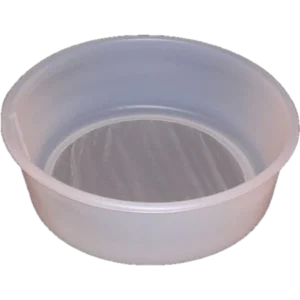
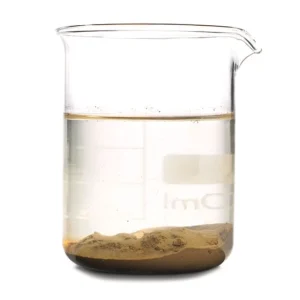
- Consider letting the water sit for up to 24 hours to gravity settle out the larger particles. Carefully pour the cleaner water on the top into a new container before filtration, while leaving the separated dirt on the bottom.
- Some waterborne particles are so fine that they will not settle out due to gravity but will stay in suspension. Some may pass through any prefilter and quickly plug the downstream micro-filter. A treatment used by municipal water treatment plants to both speed up dirt settling and remove very fine particulate is called flocculation.
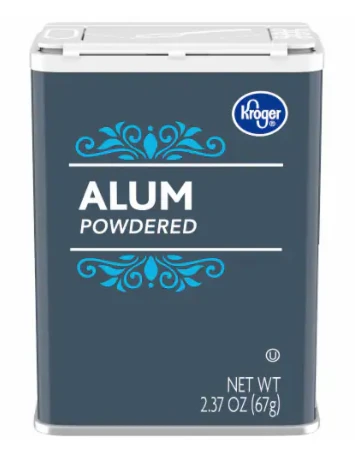 This consists of adding a small amount (1/4 tsp to 5 gallons of water) of an inert chemical to the water and stirring vigorously for a short time. After waiting for a period of time, this causes the fine particles to clump together into a substance called floc that more quickly separates from the liquid water. One common chemical used as a flocculant additive is alum which can be purchased from the spice aisle of your local grocery store.
This consists of adding a small amount (1/4 tsp to 5 gallons of water) of an inert chemical to the water and stirring vigorously for a short time. After waiting for a period of time, this causes the fine particles to clump together into a substance called floc that more quickly separates from the liquid water. One common chemical used as a flocculant additive is alum which can be purchased from the spice aisle of your local grocery store.
Total Dissolved Solids (TDS)
Dissolved solids in water include salt (i.e. sea water, brackish water, saltwater swimming pool) and minerals such as magnesium and calcium. While high salt (sodium chloride) levels (above 250 ppm) make the water unsuitable for human consumption, minerals like magnesium and calcium that make the water “hard” are essential to human health It is this reason some avoid reverse osmosis (RO) treated water, because it removes these trace minerals. Even some bottled water brands will reintroduce these minerals after the water has been RO treated. High levels of these dissolved solids ( > 1000 ppm) can affect the taste and may have some unpleasant gastrointestinal side effects such as diarrhea, but they are generally not considered harmful to human health.
Dissolved Solids cannot be removed via ordinary filtration but must use processes such as reverse osmosis filtration, distillation, or ion-exchange.
A simple TDS meter can be purchased for less than $30 US and can measure the dissolved solids level of a water sample.
Conclusion
Pretreating water with high turbidity before you run it through your PortaWell filters can greatly extend the life of your filters. In an extreme situation where you may have to rely on your PortaWell (or any filtration system) to provide safe drinking water for a lengthy period, it is important to make your consumables (filters) last until the emergency is over.
The pre-treatment processes described above are like those used by your municipal water treatment plant but on a much smaller scale. It is important to not only have the proper equipment to provide clean and safe drinking water, but also to know what your potential surface water sources are and how to configure your PortaWell for efficient and safe use.
Next we will cover biological contaminants, what they are and how best to reduce/remove them.
Categories
Facebook
Twitter
Email
Print
Recent Posts
Water Sustainability: Powering Your PortaWell® System
Sustainability is a key element especially when it comes to water and PortaWell can help provide sustainable water in an emergency. Clean water is required ...
Read More
Selection of Surface Source Water
One PortaWell® customer asked the question: I live near the Jordan River in Salt Lake City, Utah. Could I use it as a water source ...
Read More
Sustainable Water Solution for Emergency Preparedness
sus·tain·a·bil·i·ty – Noun – the ability to maintain or support a process over time. Sustainability, as it applies to emergency preparedness, is particularly important if ...
Read More
Chlorine Water Treatment for Drinking Water
Water treatment can be a challenge in an emergency and here is the why and how chlorine will be effective in the process of creating ...
Read More
Filtering Pool Water
Filtering Pool Water – PortaWell® Many people have inquired if they can filter pool water with a PortaWell® system to make it safe for drinking ...
Read More
PortaWell® Newsletters
PortaWell® Newsletters Download and read our past newsletters with tips and tricks for using your PortaWell®: Water Filter Placement and Selection – Newsletter Volume 1 ...
Read More
PortaWell® Products
-
Argonide NanoCeram® Filter (10-inch, 0.2 micron)
$52.99Original price was: $52.99.$43.95Current price is: $43.95. -
PortaWell® Starter Pak
$379.00Original price was: $379.00.$339.00Current price is: $339.00. -
PortaWell® Mini Expedition
$279.99Original price was: $279.99.$249.00Current price is: $249.00. -
PortaWell® Expansion Kit
$165.00Original price was: $165.00.$149.00Current price is: $149.00. -
PortaWell® Plus Kit
$539.00Original price was: $539.00.$479.00Current price is: $479.00. -
PortaWell® Survivor Kit
$325.00Original price was: $325.00.$289.00Current price is: $289.00. -
PortaWell® Solar Accessory Kit
$71.95Original price was: $71.95.$49.95Current price is: $49.95. -
PortaHeat®
$349.00Original price was: $349.00.$299.00Current price is: $299.00.

